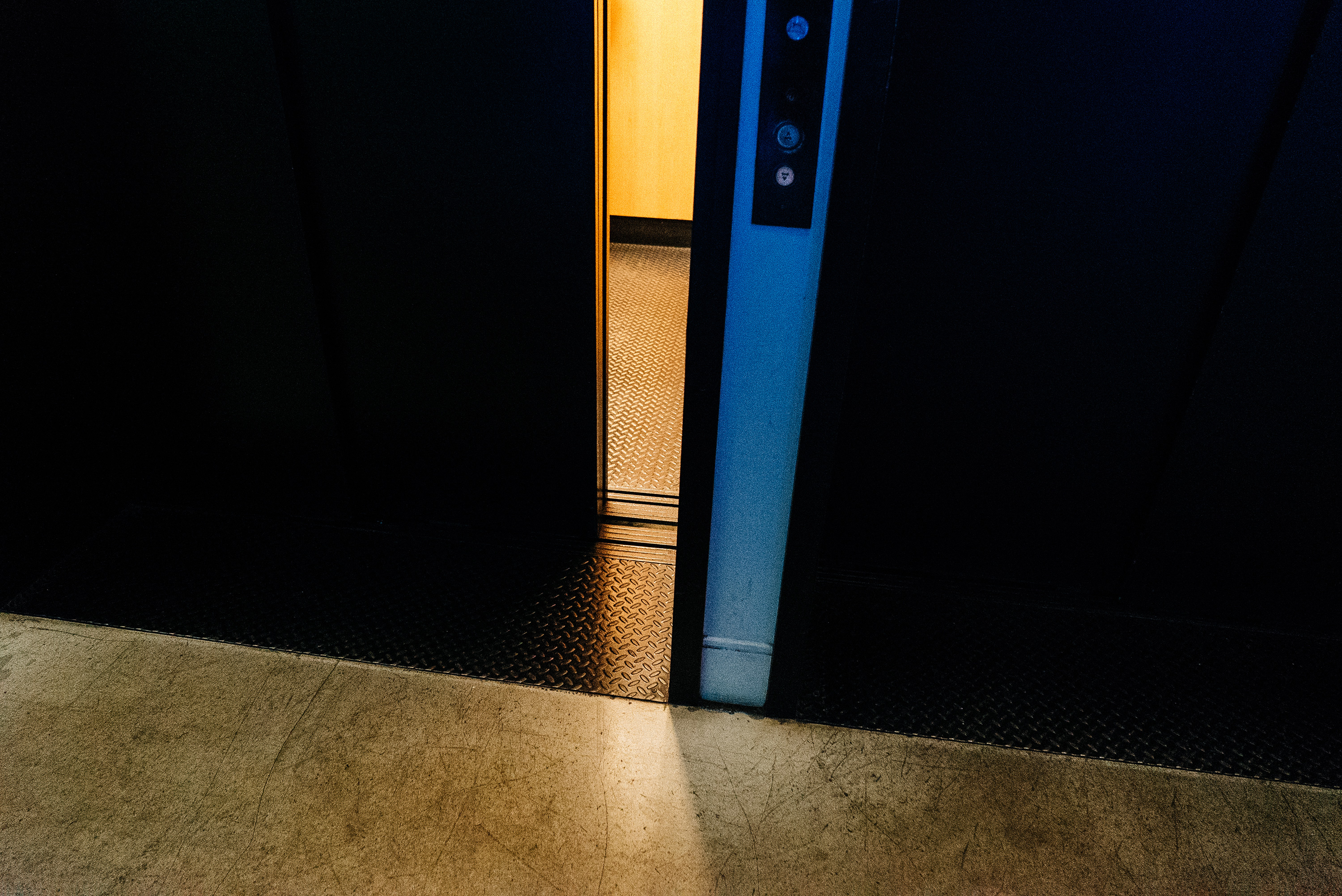Egyptrixx on Stylistic Continuity
The Canadian producer examines the guiding themes behind his various aliases

Since founding his own Halocline Trance label in 2015, David Psutka has embraced the possibilities of having a consistent outlet for his thoughtful work, releasing three LPs in that time under three different names: ANAMAI, Ceramic TL and his most well-known alias, Egyptrixx. His latest LP as Egyptrixx, Pure, Beyond Reproach, finds the former Night Slugs affiliate continuing to explore experimental club sounds with a conceptual bent. On the latest episode of RBMA Radio’s First Floor, Shawn Reynaldo speaks to the Canadian producer about his new album, stylistic consistency and harvesting “micro-incidents” from club music for inspiration.
Listen to First Floor on RBMA Radio here every Thursday at 1 PM EDT.
You’ve been really prolific as of late. Prior to this new album, there was another Egyptrixx LP in 2015. You did another album in 2016 under the name Ceramic TL, and you also did a collaborative EP with L-Vis 1990 under the name Limit. Has anything in particular prompted this creative outburst? Are you feeling particularly inspired these days?
Having the label is a crucial factor in all of that. I’ve always written a lot of music. I’ve never really had a problem with quantity. It’s usually been a challenge for me to find a place to release it all, or to have the projects in an organizational space. One of the main reasons I started the label was so that I could have a home to release all the stuff that I wanted to release. Most of the projects that are recent, like Ceramic TL and Limit, are projects I’ve been writing for a couple of years, anyways. Having the label enabled me to do it, and maybe creatively I feel a little more efficient as well.
Do you draw strict lines between your different projects and aliases?
Yes and no. Obviously continuities exist amongst all of them. I think that I have some sort of overarching or fundamental principles that I bring to all the projects, and of course I have my own incomplete, limited production and compositional skills that I bring to the table. So there are similarities, but there are definitely parameters and rules for each project. I think that’s how I’m able to work on a lot of different projects simultaneously.
Without listing all the rules and parameters for each project, would you be able to define each one for us? How do you conceptualize them?
Very briefly, I think the Egyptrixx project has always been about harvesting little incidents, micro-incidents of sound arrangement, and the experiential movements from club music, and then taking those and re-expressing them in different ways, or reinterpreting them somehow. Ceramic TL is really about formlessness and just the physicality of sound. That is much, much less structured by rules than the Egyptrixx project. Limit is sort of based around the idea of repetition and propulsion and loops and grooves, just whittling things down to basic units of rhythm. And ANAMAI we sort of think of it as this 3D sphere of sound. We try to place these songs in these interactive, 3D sort of spaces, and try to add a lot of different dimensions and depth to somewhat conventional songs.
I wanted to ask a bit more about Halocline Trance. You talked a bit about what prompted you to start up the label. Was it a hard decision? Especially because previously you were affiliated with Night Slugs, which is this widely-known, much loved label. Was it hard to leave that level of security, so to speak, and branch out on your own?
Not really. I think it was always my plan to start a label and to be releasing all my own music. I have a lot of projects and I have specific goals for each of them. It seemed like an inevitability. It made a lot of sense for me to have my own label just so I could release things quickly and release them in volume.
Night Slugs was great. We had a good relationship. We still do. I’m pretty proud of the releases that we did together. In fact, I would say that Alex especially, Bok Bok, really helped me clarify the Egyptrixx project. He really helped me understand what I was doing with it, and how it was received – the impact it had, how it felt, aesthetic ideas, that kind of thing. I really enjoyed doing stuff with Night Slugs, and it’s cool now because I still see their artists pretty regularly at shows or festivals or whatever. Obviously I still follow their output pretty closely.
Your new album is called Pure, Beyond Reproach. It’s your fourth album as Egyptrixx. When you go back and compare it to the first album, Bible Eyes, or the early Egyptrixx singles and EPs, it’s clear there’s been quite an evolution over the years. I know it’s been gradual with the different albums, but has anything in particular been driving this change over time?
I’ve kind of worked with that same basic set of rules since the beginning, definitely since the first album, and even on some of the early releases. For each album I’ll usually pick a specific kind of atmosphere or feeling or texture, and then try to do something that has some sort uniformity… I see pretty strong themes running throughout. Obviously, each record sounds different, like most albums in succession. Over the course of four albums I think any artist is going to see some change or going to end up sounding differently.
The announcement for the new album has some pretty dense academic and metaphoric language that I’m guessing many people couldn’t completely decipher, or at least figure out exactly what you’re trying accomplish with the album. Can you explain a bit of the concept behind the record or talk about what was influencing your thinking while you made it?
The album suggests this parallel between an imagined rhythm among all the microplastic in the ocean. There’s a massive amount of plastic, especially in the Pacific Ocean. The North Pacific Gyre, all this junk has been thrown into the ocean, kind of ends up in this one particular swirl. It’s a huge environmental catastrophe on an unimaginable scale. This one particular floating patch of garbage in the North Pacific is the size of the state of Texas. It’s this huge dump in the ocean.
The album images the rhythm of all these plastics colliding with one another in the ocean and suggests a parallel between that and the idea of pathological loyalty. You know, loyalty between people at all costs, despite moral or ethical problems. Loyalty that exists beyond immoral and unethical responsibility, and preferences proximity to the correct ethical behavior. I wanted to suggest some kind of harmony between those two things. I wanted to select things that were really, really vast, but also kind of microscopic in application.
Listening to the music, it doesn’t really contain anything that could be classified as dance music, at least not in the traditional sense. Are you still interested in the dancefloor and the club?
To be honest, I’m not sure the Egyptrixx project was ever a conventional club project. Out of the dozen of tracks that I’ve released under this project, I think that a couple of them are dancefloor tunes or conventional club tunes.
Frankly, that was never really the focus. For me it was about lifting these sort of experiential ideas from club music and doing different things with them. So I don’t really think of the project on that spectrum of “dancefloor-viable” versus not. I think that all the ingredients for the music are harvested from club music, a lot of the feelings and the sensations and the arrangements. But whether it works on the dancefloor or not, I don’t know. It’s not something I think about too much with these records.

